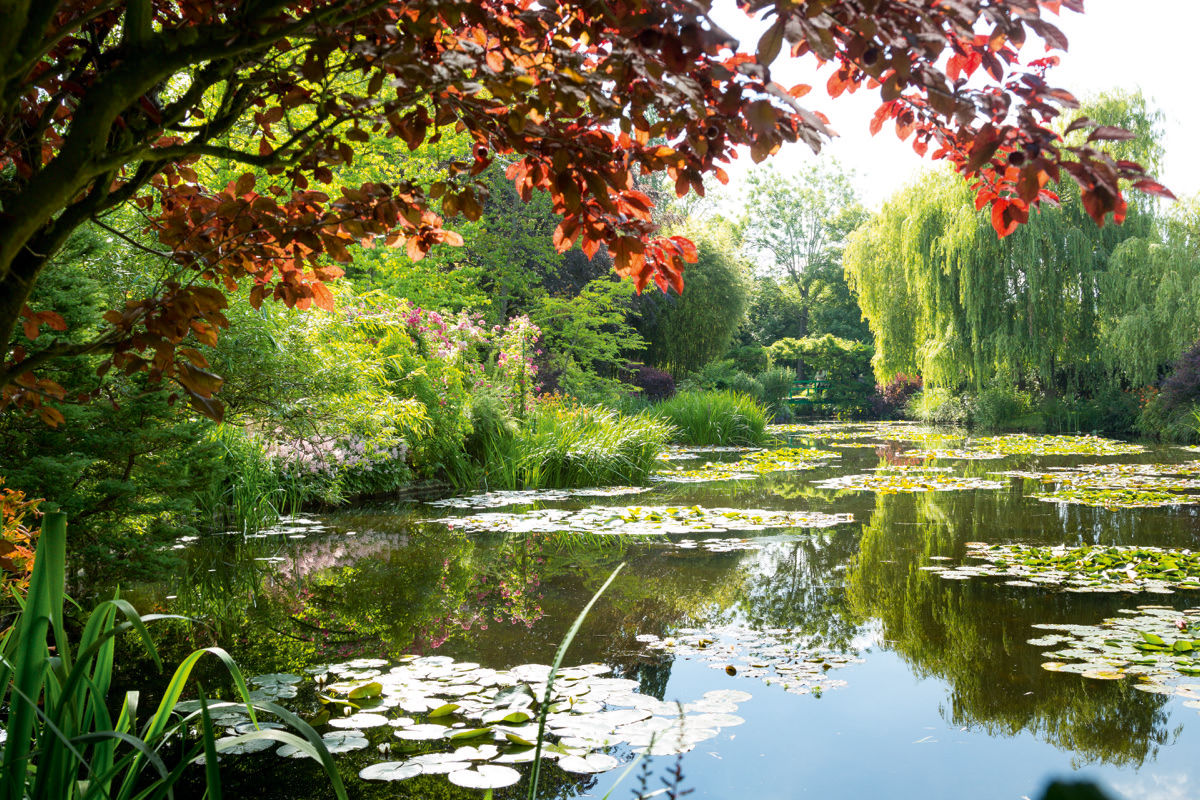HISTORY OF COLLECTION
HOW THE PROJECT CAME TO BE
In viewing Water Lilies in its entirey, one can see the progress and subtle changes that take place not only in the natural world, but within the artist as well. This makes Monet's Water Lilies unique in the way that it portrays not only the passage of time and ageing process, but also the impermanence of light and the artist himself.
LOCATION
One day, while riding on a train through the quaint French village of Giverny, about 50 miles west of Paris, Claude Monet was instantly struck by the beauty of the place, and in 1883, decided to rent a house there.
He and his family moved into the house and promptly got to work filling the gardens with ornamental flowers and tall fruit trees. After several years at the property, he decided to beautify and expand on his two acres of land. Monet aimed to divert the River Epte, thus creating a water garden for his land. The area he adorned with water lilies, imported from South America and Egypt. His motivation for this project, aside from his fondness for horticulture, was 'for the pleasure of the eye and also for the morifs to paint'.

Monet's Water Garden
ORIGIN
The Nympheas, or Water Lilies, cycle occupied Claude Monet for three decades from the late 1890s until his death in 1926, at the age of 86. This series was inspired by the water garden that he created in his Giverny estate in Normandy France. The word nymphea comes from the Greek word numphe, meaning nymph, which takes its name from the Classical myth that attributes the birth of the flower to a nymph who was dying of love for Hercules. In fact, it is also a scientific term for a water lily. The famous water lily pond inspired Monet to create a colossal work composed of almost 300 paintings, over 40 of which were large format.
SUBJECT
The focal point of these paintings was the artist's beloved flower garden, which featured a water garden and a smaller pond spanned by a Japanese footbridge. In his first water-lily series (1897-99), Monet painted the pond environment, with its plants, bridge, and trees neatly divided by a fixed horizon. Over time, the artist became less and less concerned with conventional pictorial space.
By the time he painted Water Lilies, which comes from his third group of these works, he had dispensed with the horizon line altogether. In this spatially ambiguous canvas, the artist looked down, focused solely on the surface of the pond, with its cluster of begetation floating amid the reflection of the sky and trees. Monet thus created the image of a horizontal surface on a vertical one.
These paintings would be laid out side by side, creating what the artist described as 'the illusion of an endless whole, or water without horizon or bank.' With all of these panels mounted next to one another, this would create what Monet referred to as, 'the refuge of a peaceful meditation in the centre of a flowering aquarium.'

View of Bridge in Monet's Garden
IMPACT
The fascination of the Water Lilies cast over the public and over artists remained unchanged with later generations: Joan Mitchell, Riopelle, Sam Francis to cite just a few. But beyond the all-over style, Monet also invented something that today seems common but was ahead of the times in his era:the idea of an environment that has fed all currents of art all the way through to the present, from Minimalism to the most contemporary generations.
